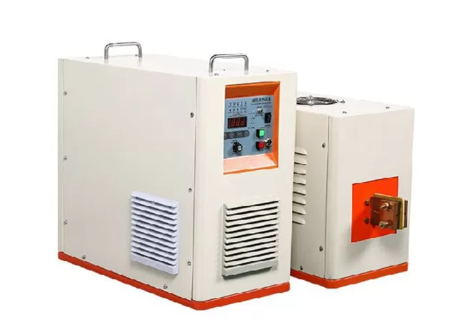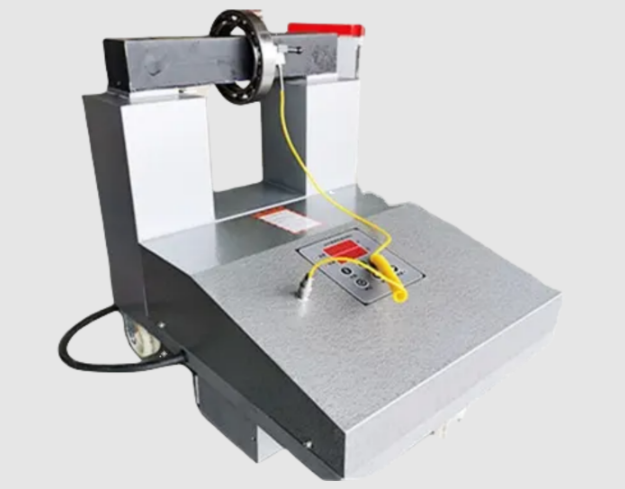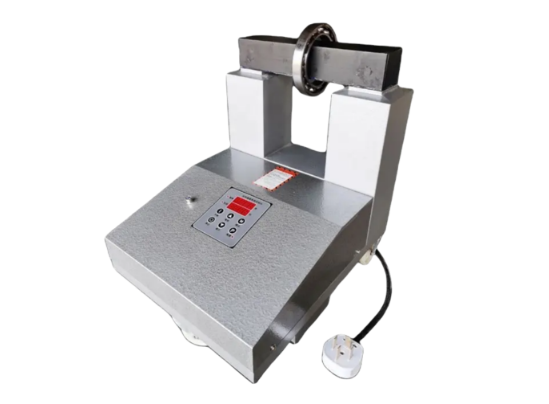What is HF (RF) Welding?
High-Frequency (HF), also called Radio-Frequency (RF), welding is a method for joining thermoplastic materials using radio waves together with pressure to produce heat inside the material itself. The process commonly operates at 27.12 MHz and uses electromagnetic energy to generate internal heating that fuses the contacting surfaces, producing strong, high-quality seams without an external heat source.

How HF / RF Welding Works
HF welding is carried out in a few clear stages:
1. Energy generation — an HF generator produces the high-frequency electromagnetic energy.
2. Energy application — an electrode (tool) applies that HF field to the material surfaces to be joined.
3. Heat generation — the HF field causes molecular movement inside the dielectric material, producing heat within the material layers.
4. Material softening and fusion — the internally generated heat softens the surfaces so they fuse together.
5. Cooling under pressure — while held under pressure, the welded area cools and solidifies to form a durable joint.
Because the heat is generated inside the material, HF welds are frequently as strong as — or stronger than — the parent material.
Why Use HF / RF Welding?
HF welding is particularly effective for PVC (vinyl) and PU (polyurethane) materials. Compared with technologies such as hot air, hot wedge, or impulse welding, HF welding typically produces stronger seams that are airtight and waterproof. The process is repeatable and controllable, making it well suited for production of identical parts with consistent weld geometry.
Key Benefits
Repeatable, reliable technology: precise control of the HF field enables consistent, uniform heating and repeatable seams.
Strong, even welds: HF fusion forms durable bonds that withstand stress and strain without inconsistencies.
Air-, gas- and waterproof seals: ideal when tight barriers are required, such as inflatable products or liquid containment.
Multi-layer welding: several layers can be welded at once, giving flexibility for layered or composite products.
Environmentally friendly: usually requires no adhesives, solvents, or other consumable bonding agents, reducing waste and byproducts.
Materials Suitable for HF / RF Welding
The materials most commonly welded with HF are PVC (polyvinyl chloride, vinyl) and PU (polyurethane). These can be thin or thick, reinforced or coated, plain, colored or patterned — HF welding works across that range of constructions.
Typical End Products
HF welding is used to manufacture a wide variety of products made from PVC/PU materials, for example: truck and boat covers, tarps, tents and temporary structures, pool liners, sunshades, billboards, inflatables, liquid tanks, movie screens, waterbeds, stretch ceilings, valve membranes, and oil booms.
Process Factors That Matter
Pressure: ensures intimate contact between material layers so the HF field can heat the interface uniformly.
Welding effect (energy level): the amount of HF energy controls internal heating; it must be tuned to achieve sufficient penetration without overheating or damaging the material.
Welding time: duration of HF application. Too short yields incomplete bonding; too long risks material degradation or weakening. Optimal times depend on material type and thickness.
Cooling time: controlled cooling under pressure stabilizes the weld and prevents deformation or internal stress; cooling rate affects final weld properties.
When to Choose HF / RF Welding
HF welding is an excellent choice when your material is dielectric (especially PVC or PU); you require clean, repeatable seams without adhesives; you manufacture repeated parts with defined weld shapes; or you need multiple weld passes in the same area, which some alternative methods cannot do.
Alternatives to HF Welding (Brief Comparison)
Hot Air
How it works: hot air is blown between material layers while rollers press the preheated surfaces.
Advantages: can be used for some non-dielectric materials; useful as a complement to HF for finishing large structures and patching.
Disadvantages: difficult to remake if unsatisfactory; requires skilled operators; noisy and can produce fumes; less effective on very thick materials; hard to achieve fully air-, liquid-, or gas-tight seams.
Hot Wedge
How it works: material is drawn over a heated wedge while rollers press the preheated surfaces.
Advantages: usable for non-dielectrics; helpful for overlaps, hems, and tubing.
Disadvantages: difficult or impossible to remake a bad weld; noisy; can generate fumes; not ideal for very thick materials; not well suited for fully airtight or watertight seals.
Impulse
How it works: a steel band is heated by electrical current; heat transfers mechanically to the fabric.
Advantages: can be used on some non-dielectric materials.
Disadvantages: weld length is limited by tool length; steel bands can heat unevenly, potentially damaging sensitive fabrics.
Ultrasonic
How it works: high-frequency mechanical vibration generates localized heat through friction.
Advantages: usable on non-dielectrics; suitable for detailed or fine welding.
Disadvantages: high-pitched sound; difficult to weld more than two layers; weld area is limited, not suitable for larger applications.






